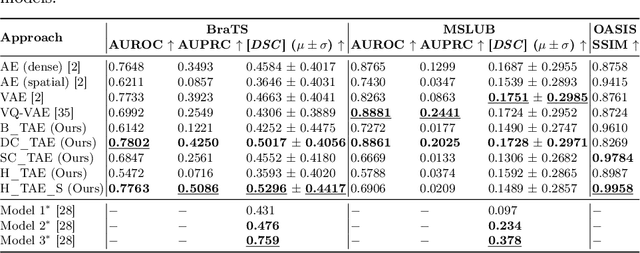Transformer based Models for Unsupervised Anomaly Segmentation in Brain MR Images
Paper and Code
Jul 05, 2022



The quality of patient care associated with diagnostic radiology is proportionate to a physician workload. Segmentation is a fundamental limiting precursor to diagnostic and therapeutic procedures. Advances in Machine Learning (ML) aim to increase diagnostic efficiency to replace single application with generalized algorithms. In Unsupervised Anomaly Detection (UAD), Convolutional Neural Network (CNN) based Autoencoders (AEs) and Variational Autoencoders (VAEs) are considered as a de facto approach for reconstruction based anomaly segmentation. Looking for anomalous regions in medical images is one of the main applications that use anomaly segmentation. The restricted receptive field in CNNs limit the CNN to model the global context and hence if the anomalous regions cover parts of the image, the CNN-based AEs are not capable to bring semantic understanding of the image. On the other hand, Vision Transformers (ViTs) have emerged as a competitive alternative to CNNs. It relies on the self-attention mechanism that is capable to relate image patches to each other. To reconstruct a coherent and more realistic image, in this work, we investigate Transformer capabilities in building AEs for reconstruction based UAD task. We focus on anomaly segmentation for Brain Magnetic Resonance Imaging (MRI) and present five Transformer-based models while enabling segmentation performance comparable or superior to State-of-The-Art (SOTA) models. The source code is available on Github https://github.com/ahmedgh970/Transformers_Unsupervised_Anomaly_Segmentation.git
 Add to Chrome
Add to Chrome Add to Firefox
Add to Firefox Add to Edge
Add to Edge